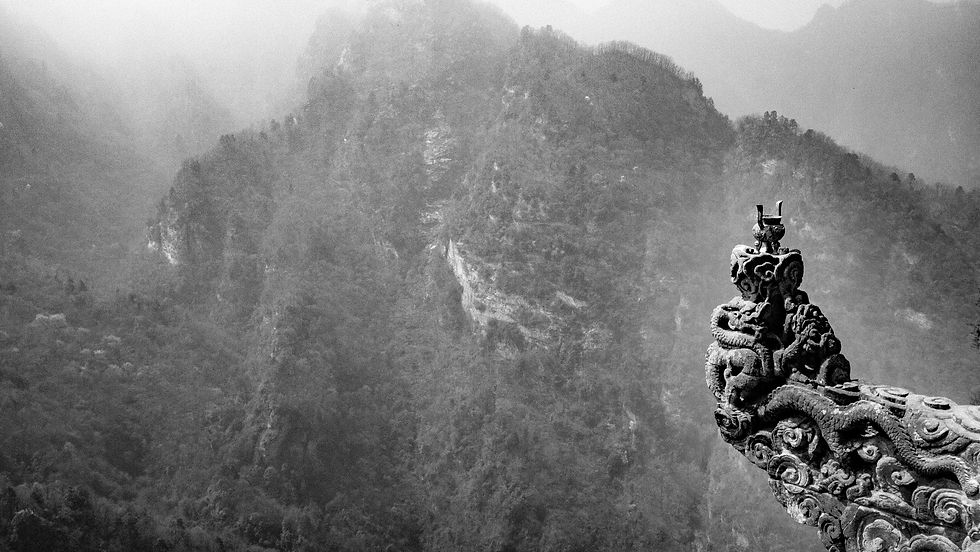Lens Magazine Open Call Finalist
- Robin Yong

- Jun 10, 2021
- 3 min read
A collaboration of Florence Biennale, Art Market Magazine, and Lens Magazine.

So happy to be amongst the best names in the contemporary art and photography circle.
Got an email last night and found myself to be a finalist of the 2021 Lens Magazine Open Call.
For this contest, participating artists and photographers were invited to interpret the theme of the XIII Florence Biennale which will be held from 23 to 31 October at the Fortezza de Bazzo, Florence, Italy under the high patronage of the European Parliament.
The theme was Eternal Feminine | Eternal Change
Concepts of Femininity in Contemporary Art and Design
The theme of the XIIIth edition of the Florence Biennale, which will be held from 23 to 31 October 2021 at the Fortezza da Basso in Florence, focuses on the polychrome and multiform universe of femininity, which will be investigated in its many facets, starting with two major guidelines.
On the one hand, the idea that outlines femininity in its immutable essence, which has inspired various of the most important artistic and literary creations in the history of mankind and which unfolds from the primordial cult of the Mother Goddess (Mother Earth) up to the famous Beatrice of Dante Alighieri and Johann Wolfgang Goethe’s “Eternal Feminine”: the idea of femininity as a reflection of divinity, as a spiritual love that crosses the boundaries of time, as a source of purification and elevation, and as a force of universe that forms everything and holds everything.
On the other hand, the idea of perennial change that characterizes the contemporary world and that also affects femininity, which has been transformed and is transformed by the thrust of social and cultural movements such as those that have developed around feminisms and LGBTQ communities. From the sexual revolution of the 1960s to the battles for equal opportunities, up to the debate on gender identities, there are countless stimuli that have led to a redefinition of the concept of femininity, increasing its complexity and multidimensionality even more.
The theme of the XIII Florence Biennale, which will be developed in the coming months thanks to a series of contributions from international curators and experts and which will be interpreted by the participating artists and designers, does not intend to stop at this dichotomy, rather wanting to open up to the widest plurality of points of view. In this perspective, we ask all interested parties from now on some questions, to be understood as part of the possible food for thought related to the theme:
What characteristics outline the immutable essence of femininity?
What aspects have changed in today’s society?
How can femininity be represented in contemporary art?
How can femininity dialogue with the world of design?
How can gender identity be expressed through art and design?
How can art and design contribute to reducing gender inequalities?
Title and text by Giovanni Cordoni | Graphic Design by Edoardo Matteoni © Florence Biennale 2020
And my entry for this competition: Sisters
And the link to the contest webpage:
https://lensmagazine.net/winners-finalists-open-call-competition/

Sisters - one of my most successful photos and a spin-off from my Flowers of Ethiopia series.
During my trip to Ethiopia in 2016, I photographed some of the other tribes as well and called this other series Tales of the Omo Valley.
These ladies are from the Arbore Tribe of the Omo Valley, Ethiopia.
Ethiopia, in the Horn of Africa, is a rugged, landlocked country split by the Great Rift Valley.
The Arbore are a Cushitic ethnic group living in southern Ethiopia, near Lake Chew Bahir. The Arbore people are pastoralists. With a total population of 6,850, the Abore population is divided into four villages, named: Gandareb, Kulaama, Murale, and Eegude.
Unmarried ladies of the Arbore Tribe, Omo Valley Ethiopia - cover their shaven heads with a long black scarf. The ladies are also well-known for their very elaborate beaded necklaces and aluminium jewelry.
The photo was done using just natural lighting alone. The ladies were standing just outside their hut and were never taught to pose. The picture was converted to monochrome to give it more character.
With archaeological finds dating back more than 3 million years, it’s a place of ancient culture. In the Omo Valley, there are many tribes still living in the same way where life used to be a few hundred years ago. The place is a real eye opener...very rugged but it is also the place where some of my best photos come from.






link link link link link link link link link link link link link link link link link link link link link link link link link link link link link link link link link link link link link link link link link link link link link link link link link link link link link link link link link link link link link link link link link link link link link link link link link link link link link link link link link link link link link link link link link link link link link link link link link link link link link link link link link link link